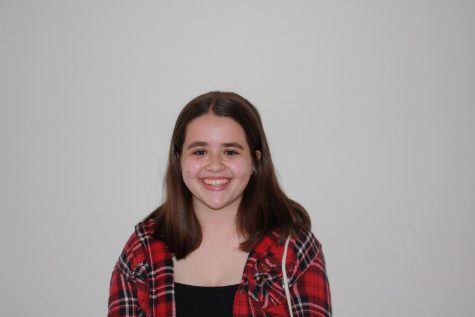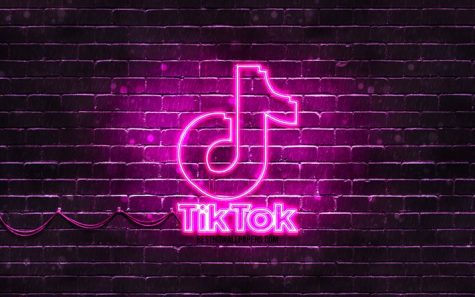New Fremont freshman literature curriculums
This year, freshmen are being taught three different versions of Literature and Writing (Lit/Writ) curriculum, two of which are pilot programs being run by the Fremont High School English Department and the FUHSD, respectively. Although there has been some dissonance among students regarding the drastic gap between types of work that they are doing, the intention behind running so many different programs at once is to find what works best for students going forward.
As for the versions run by Fremont, a main difference is the addition of “The Sun is Also a Star” by Nicola Yoon to the curriculum, either in place of or in addition to “Romeo and Juliet.” The English Department is running a pilot called the “Mainstream” curriculum, where students read “The Sun is Also a Star” in its entirety, in addition to select passages from “Romeo and Juliet.” Fremont Lit/Writ teachers David Bigelman and Aisha Lomando are testing out this version of the curriculum for the first time this year.
“Shakespeare gives us an incredible amount of language, so we wanted to make sure students were fully exposed to that or at least aware of it,” Bigelman, who is also the Fremont English Department Lead, said.
One of the reasons behind teaching “The Sun is Also a Star” in addition to “Romeo and Juliet” was to provide students with more modern perspectives to engage with. The former novel depicts two teens, a Korean-American boy who struggles with parental pressure and a Jamaican girl who is dealing with a looming deportation, as they begin a relationship.
“That’s something, inherently, that you can’t do with Romeo and Juliet,” Fremont English teacher Melisa Lu said. “You can talk about similar themes such as family or love, but you can’t [relate these characters to specific identities] in Romeo and Juliet because all the characters are from the same racial background, or from the same higher class, generally speaking.”
One intention behind adding “The Sun is also a Star” to the curriculum was to make sure students could see themselves reflected in the content that they are reading.
“A lot of what we read is classic,” Lomando said. “I think it’s important to have a mix, and expose students to diversity in authors and also perspectives with more contemporary voices.”
While the language used in “Romeo and Juliet” can often be difficult to understand and analyze, students can generally see the value in learning it regardless.
“Shakespeare can be outdated at times, but I think it’s kind of important to learn it anyways,” Fremont freshman Daniela Gerson said.
Students are about to complete “The Sun is Also a Star” and write an essay on it. Overall, the unit can be deemed a success.
“Doing a unit for the first time there’s a lot that’ll change,” Lomando said. “There’s definitely things that I would fine-tune for next year, but overall, I think it worked out well with what we have chosen to do. For the most part, I think the students enjoy the book itself.”
However, there were still some struggles given that this year’s freshmen spent the end of seventh grade and all of eighth grade on online school.
“[Discussion] was a big struggle, having done online school,” Lomando said. “Getting them used to the flow of what it means to have an academic discussion, like getting everybody to participate and contribute something meaningful [was something we had to work on].”
While the Mainstream pilot program has taken a more traditional approach, with students focusing on reading, analyzing and writing essays, the district pilot program has much more emphasis on identity-based learning and building community among students. The idea for this version of the curriculum draws on principles from culturally responsive education, which is a course designed by educator Zaretta Hammond who believes that culturally responsive teaching is about helping culturally and linguistically diverse students who have been marginalized in schools build their skill and capacity to do rigourous work. Many teachers from Fremont took this course on this topic, including Lu and Stephanie Fujii, who are teaching the district pilot program. Lu’s classes have not read a novel yet, while Fujii’s classes are reading “The Hate U Give” by Angie Thomas.
FUHSD Coordinator of Academic Interventions Josh Maisel has contributed to the planning of this version of the curriculum. He believes that communication between students should be emphasized, as students often are afraid of looking stupid in front of their peers, which can then hinder their learning and cause them to perform at a lower level than expected. As such, the pilot was created to try to find different, less “traditional” ways for the students to take away the same skills.
“What we’re testing in this pilot is, is there like a ‘go slow to go fast approach’ where [students] spend significant time in the first ten weeks of school building a community so students feel like they can take risks and look stupid in front of their peers,” Maisel said.
In addition, there is an emphasis on students being independent learners.
“If [students] can self-direct their learning, if they know exactly what they need to do, and they can make those connections, they can think independently,” Lu said. “That’s one of the goals, outcomes that we want.”
When different pilot programs are being developed and tested, the goal is never to have all versions of the same course be the exact same. So Lit/Writ classes may continue to look different going forward, but there is still information to be learned from trying different methods of teaching.
“My guess is that we’ll come out at the end of the year with like, here’s three key features about what we’ve learned through this curriculum; these things didn’t work, so we should stop doing them; these things did work, so everyone should start doing them,” Maisel said.
Classes in the district pilot program tend to use shorter texts, audio or videos that students can then analyze in a paragraph (versus an essay) format.
Although the sense from students is that they are being taught different skills in different ways, the intention is to teach the same skills in different ways. According to Maisel and Lu, the programs are more alike than different.
“The only real difference between the pilot and the mainstream classes is that the teachers that are doing this are spending extra attention to build community among the students,” Maisel said. “And to try to address the core content standards in ways that are a little bit different from the other classes. It’s not that they’re not writing and reading, it’s that they’re taking a little bit [of a] different pace and format.”
At the beginning of the year, all Lit/Writ teachers agreed on essential learning outcomes, or skills that freshmen should be able to take away from the course, especially in preparation for World Lit, the sophomore level course.
“We have 500 freshmen,” Maisel said. “I run our summer school; we have kids failing World Lit all the time, so clearly they weren’t prepared by Lit/Writ.”
There is not a planned form of follow-up for how teachers address these outcomes specifically; they are allowed the power to teach their students however they see fit, as long as they follow the outcomes eventually. Although this may seem like it allows for supposed drastic differences between the experience of freshmen, they are all learning and practicing the same skills.
“Even when teachers are teaching the same books, students have very different experiences,” Maisel said. “Even two students in the same classroom would have very different experiences with the way that they connect with the teacher or not. I get how [students are] wondering why they’re learning different things, but they’re different teachers, they’re always going to be learning different things.”
According to the principles behind the culturally responsive district pilot program, it would not be feasible for students to experience all types of the curriculum: to spend an emphasized amount of time learning about their identity at the beginning of the school year in addition to having a short stories unit; to read a version of both “Romeo and Juliet” in addition to “The Sun is Also A Star;” to write five-paragraph essays in addition to watching and analyzing videos and shorter texts.
“We gotta pick and choose what’s gonna be prioritized,” Lu said.
The main difference between the versions of the curriculums is the method used to achieve the standards. This can include, generally, what goes on in class, as well as the different books read.
“There’s more flexibility around the pathway for students to build those skills, including in some cases, the core texts that they read,” Maisel said.
While students may still feel like they are doing different things in class, the intention is to ensure that all students are prepared. All versions of the curriculum, so far, can be deemed a success in this stage of the process.
“In my opinion, my ninth graders are amazing,” Lu said. “They take [what they’re doing in class] very seriously. They’re genuinely reflecting. They’re using that to help them. I can confidently say that for my students, most of them are very successful right now, in terms of developing all of these skills.”
The FHS English Deparment should be applauded for trying new methods of teaching. What’s unknown is if, when or how the success of the program will be measured at the district level. It remains to be seen if the district is commited to measuring the success of this new program. To do so, they would have to track both mainstream and the culturally responsive teaching pilot program through the end of students’ sophomore year. As of now, the district is planning on surveying the students in the culturally responsive pilot program at the end of the year. While this is a vital data point, it’s not a measure of academic skill. Hopefully, the district will follow through.












